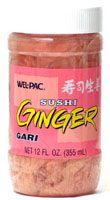Salting and Pickling
Salting, especially of meat, is an ancient preservation technique. The salt draws out moisture and creates an environment inhospitable to bacteria. If salted in cold weather (so that the meat does not spoil while the salt has time to take effect), salted meat can last for years.
The following passage from John Steinbeck's "The Grapes of Wrath" describes the process briefly:
Advertisement
This technique creates a keg (a wooden barrel) full of salt and meat. This technique is ancient. You can read about its use during the sailing voyages around the time of Columbus. Many accounts of the Revolutionary War and especially the Civil War talk about meat preserved in this way. Salting was used to preserve meat up through the middle of this century, and was eventually replaced by refrigeration and freezing.
Today, salting is still used to create salt-cured "country ham" found widely in the southern United States, dried beef (which you can buy in jars at most grocery stores), and corned beef and pastrami, which are made by soaking beef in a 10-percent salt water brine for several weeks.
Pickling was widely used to preserve meats, fruits and vegetables in the past, but today is used almost exclusively to produce "pickles," or pickled cucumbers. Pickling uses the preservative qualities of salt (see above) combined with the preservative qualities of acid, such as acetic acid (vinegar). Acid environments inhibit bacteria. To make pickles, cucumbers are soaked in a 10-percent salt water brine for several days, then rinsed and stored in vinegar to preserve them for years.
